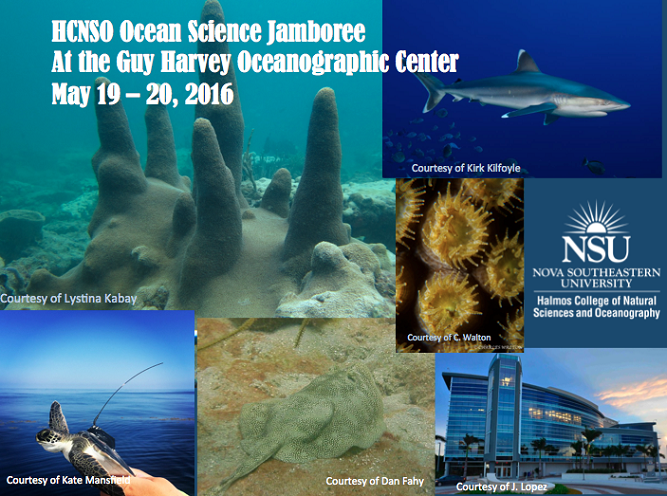Into the Unknown: Understanding the largest ecosystems on Earth
Location
Guy Harvey Oceanographic Center Facility
Start
5-20-2016 4:00 PM
End
5-20-2016 4:15 PM
Abstract
Human activities are causing unprecedented changes to the natural environment at a global scale. Consequently, there is a pressing need for integrated, multi-disciplinary research to understand how ecosystems function and respond to environmental change over a wide range of spatial and temporal scales in order to develop effective management and conservation strategies. However, evaluating the consequences of anthropogenically-driven change first requires an understanding of the natural variability of an ecosystem and such baseline data are often lacking. This is particularly true of the deep sea, which covers >70% of the Earth’s surface and provides >99% of its inhabitable volume. Once believed to be stable and quiescent, the deep oceans are now known to be highly dynamic and closely linked to shallow-ocean and atmospheric processes. Despite their vast size, the deep oceans remain poorly studied and comprehensive data on the distribution, diversity and abundance of most fauna are lacking.
As a new post-doctoral researcher at NSU, I will be working with Prof. Tracey Sutton to better understand the community ecology of the deep-pelagic megafauna in the Gulf of Mexico (GoM). The GoM is naturally highly dynamic, with numerous oceanographic processes that are likely to influence the pelagic fauna. The GoM is also heavily influenced by anthropogenic activities (e.g. oil extraction); the potential impacts of which were highlighted by the Deepwater Horizon disaster in 2010. Since 2010, two major research programmes have produced data of unprecedented quantity and quality describing the pelagic fauna in the GoM. In this presentation, I will present some of my initial analyses of these data and discuss the future direction of the project.
Into the Unknown: Understanding the largest ecosystems on Earth
Guy Harvey Oceanographic Center Facility
Human activities are causing unprecedented changes to the natural environment at a global scale. Consequently, there is a pressing need for integrated, multi-disciplinary research to understand how ecosystems function and respond to environmental change over a wide range of spatial and temporal scales in order to develop effective management and conservation strategies. However, evaluating the consequences of anthropogenically-driven change first requires an understanding of the natural variability of an ecosystem and such baseline data are often lacking. This is particularly true of the deep sea, which covers >70% of the Earth’s surface and provides >99% of its inhabitable volume. Once believed to be stable and quiescent, the deep oceans are now known to be highly dynamic and closely linked to shallow-ocean and atmospheric processes. Despite their vast size, the deep oceans remain poorly studied and comprehensive data on the distribution, diversity and abundance of most fauna are lacking.
As a new post-doctoral researcher at NSU, I will be working with Prof. Tracey Sutton to better understand the community ecology of the deep-pelagic megafauna in the Gulf of Mexico (GoM). The GoM is naturally highly dynamic, with numerous oceanographic processes that are likely to influence the pelagic fauna. The GoM is also heavily influenced by anthropogenic activities (e.g. oil extraction); the potential impacts of which were highlighted by the Deepwater Horizon disaster in 2010. Since 2010, two major research programmes have produced data of unprecedented quantity and quality describing the pelagic fauna in the GoM. In this presentation, I will present some of my initial analyses of these data and discuss the future direction of the project.


